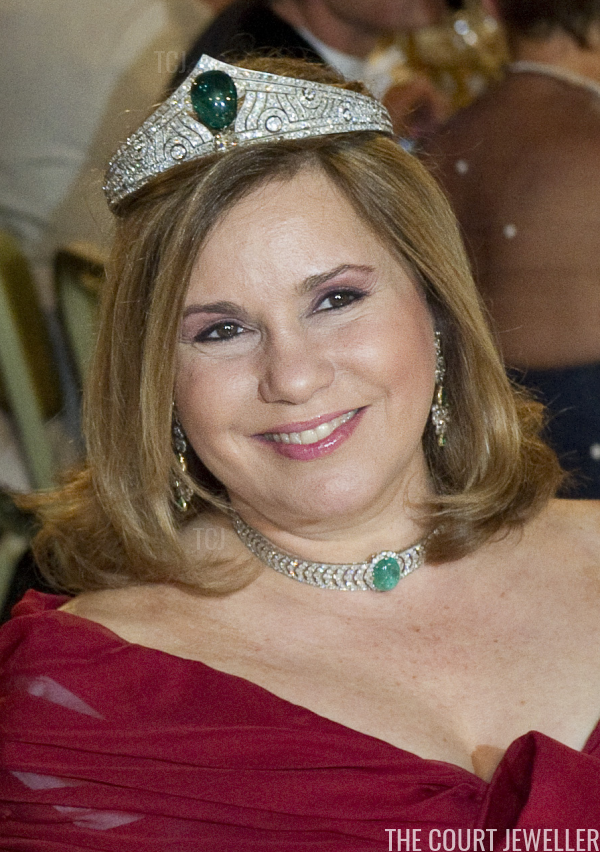 |
| JONATHAN NACKSTRAND/AFP/Getty Images |
Royal Peacock Jewels
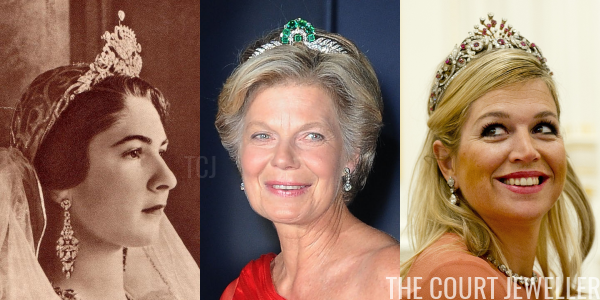 |
| Wikimedia Commons, Sean Gallup/Getty Images, ROBIN UTRECHT/AFP/Getty Images |
The gorgeous feathers of the peacock have provided design inspirations for artists for generations, including the makers of royal jewelry. Today, here’s a look at a trio of peacock-inspired jewels.
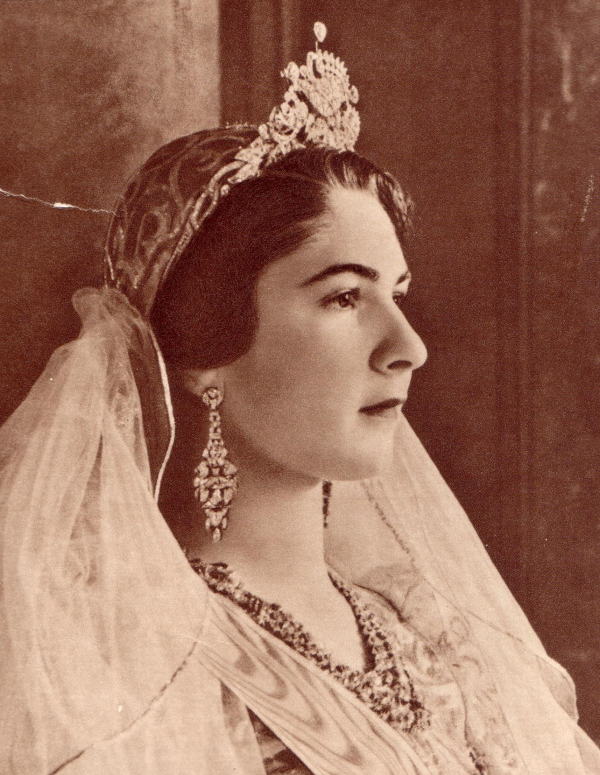 |
| Wikimedia Commons |
Seventeen-year-old Safinaz Zulficar became Queen Farida when she married eighteen-year-old King Farouk of Egypt in Cairo in January 1938. On her wedding day, she was dripping in diamonds, including a massive tiara that with peacock and lotus inspired designs.
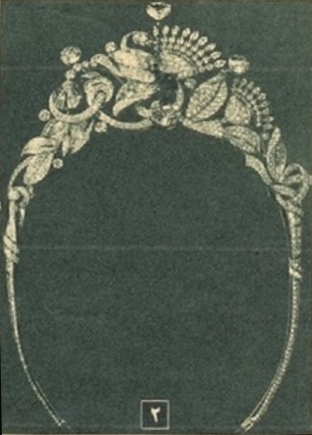 |
| Wikimedia Commons |
The diamond tiara may have been a wedding gift to Farida from her mother-in-law, Queen Nazli. Farida’s mother had once served as one of Nazli’s ladies-in-waiting.
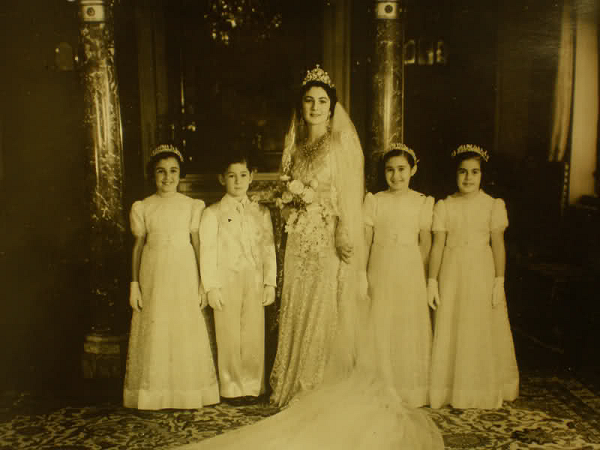 |
| Wikimedia Commons |
For her wedding, Farida paired the peacock tiara with a magnificent diamond festoon necklace from Boucheron. The necklace was a wedding gift from her new husband, as was her couture wedding gown, bought from Worth in Paris.
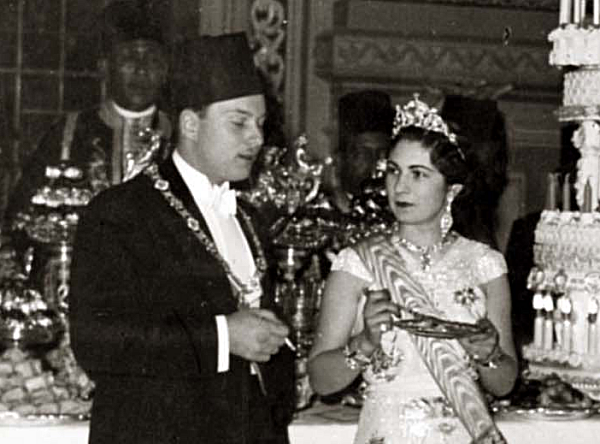 |
| Memory of Modern Egypt Digital Archive/Wikimedia Commons |
Above, Farida wears the tiara at the couple’s wedding banquet. The couple had three daughters, but only a son could inherit the throne. Although she was extremely popular with the Egyptian public, Farouk divorced Farida on November 17, 1948. (On the same day, the Shah of Iran divorced Farouk’s sister, Fawzia; the two men had reportedly coordinated their announcements to divide the focus of the press.)
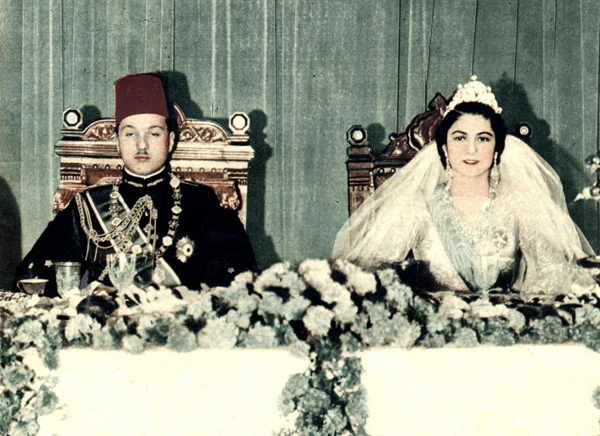 |
| Memory of Modern Egypt Digital Archive/Wikimedia Commons |
After her divorce, Farida’s peacock tiara apparently remained in the Egyptian royal collection. We don’t seem to know precisely what happened to it. Some believe it may have been sold at auction, while others hope that it may still remain tucked away in museum storage today, more than half a century after the monarchy was overthrown.
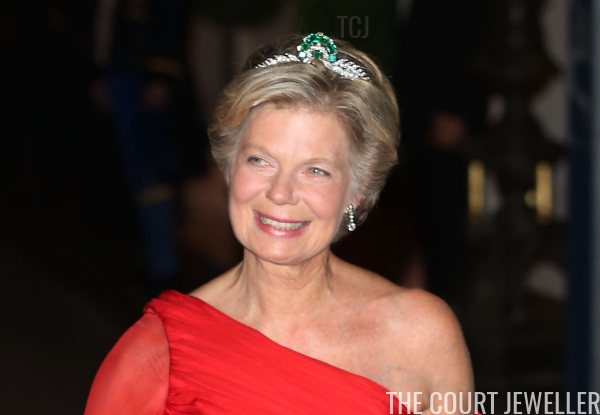 |
| Sean Gallup/Getty Images |
Made by Van Cleef and Arpels, this convertible necklace/tiara features diamond feathers culminating in a diamond and emerald peacock tail. The piece was commissioned in 1956 by Grand Duchess Josephine-Charlotte of Luxembourg, who provided two pendants to be mined for gems to use in the new sparkler.
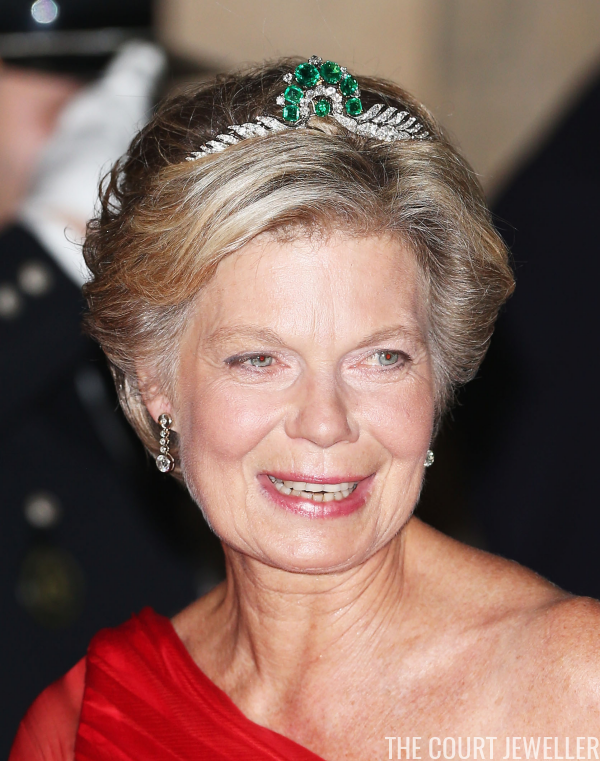 |
| Andreas Rentz/Getty Images |
The convertible piece is still with the Luxembourgish grand ducal family today. It’s been worn in recent years by Grand Duchess Maria Teresa, Princess Marie Astrid, and Princess Tessy.
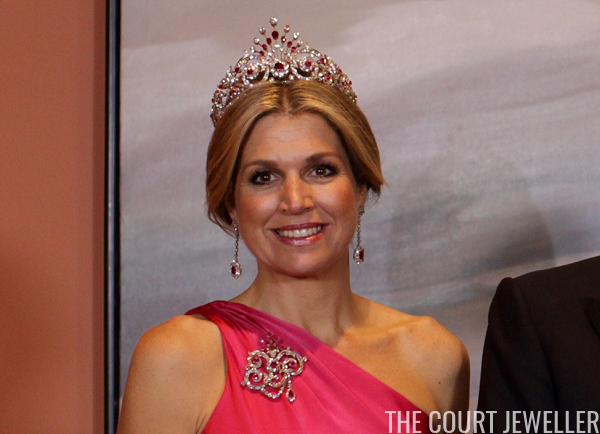 |
| DAVE CHAN/AFP/Getty Images |
The Dutch royal vaults contain a remarkable parure of peacock-inspired jewels set with diamonds and rubies, made in 1897 during the reign of Queen Wilhelmina.
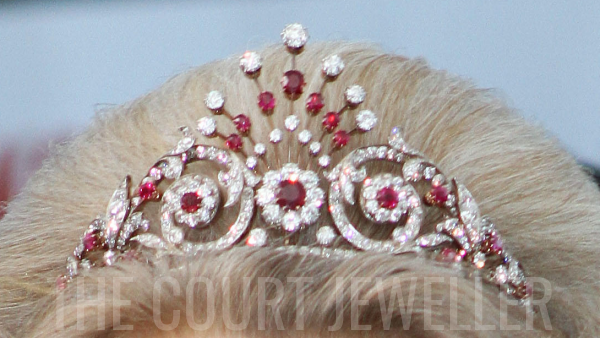 |
| Albert Nieboer/DPA Picture Alliance Archive/Alamy |
The tiara from the suite features a peacock tail in its center, flanked by a series of scrolls, clusters, and floral designs. The center element of the tiara can be removed and worn separately.
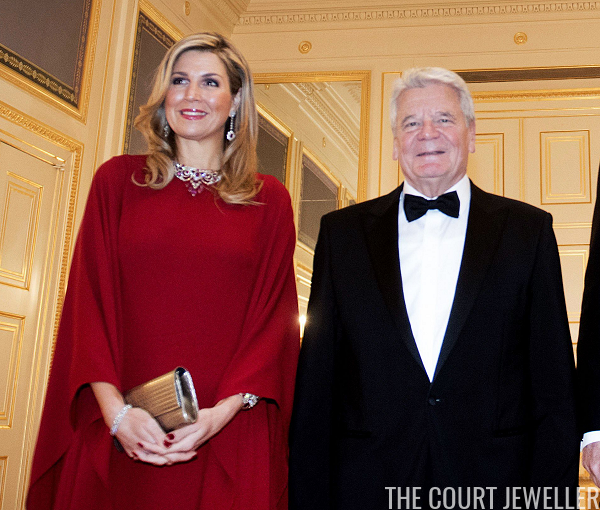 |
| OLAF KRAAK/AFP/Getty Images |
The suite also includes a matching mirrored necklace (worn by Queen Juliana at her inauguration) and a large brooch, both of which feature peacock tail motifs in their designs.
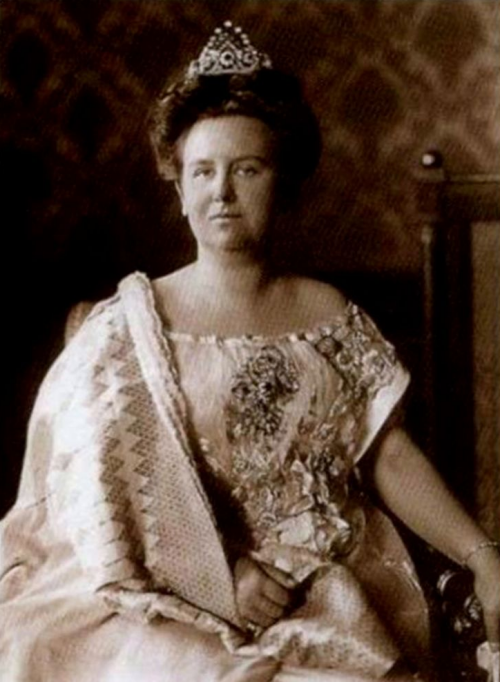
The suite has been worn by numerous members of the royal family, and it’s now frequently sported by Queen Maxima. (Read more about it over here!)
The Luxembourg Turquoise Tiara
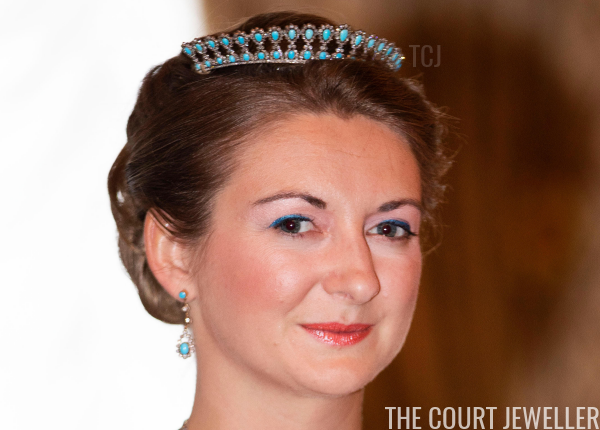 |
| Albert Nieboer/Royal Press Europe/Alamy |
The Luxembourgish royal vaults hold one of the best royal jewel collections in the world — one that can occasionally bring us a delightful surprise or two. That was the case with this suite of heirloom turquoise jewels, which we first saw put into the family’s current tiara rotation about a decade ago.
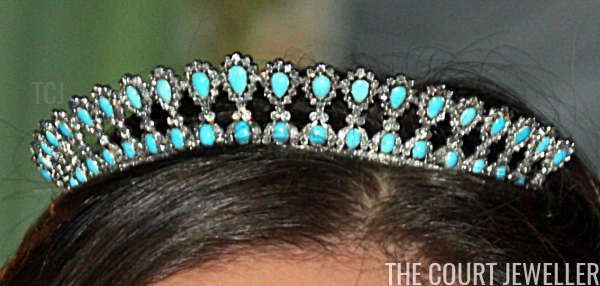 |
| Albert Nieboer/Royal Press Europe/Alamy |
The suite, which is essentially a married parure, consists of a small diamond and turquoise tiara and accompanying coordinating jewels. The tiara features small pear-shaped turquoises surrounded by diamonds, set atop a base of turquoises between diamond prong-style elements. The tiara, which was reportedly made in the 1830s, looks a bit truncated on the wearer’s head; its design terminates rather abruptly at each end, rather than tapering as many similar tiaras would.
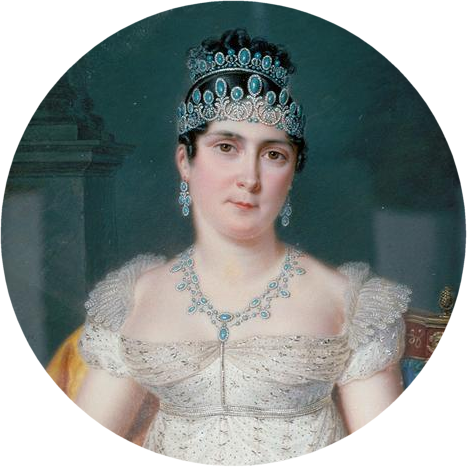 |
| Wikimedia Commons |
The reported date of the piece’s creation, and its general profile, make me think that it wasn’t originally a tiara at all. Instead, it looks much more like a comb, a jeweled ornament that would be worn further back on a woman’s head during the Empire period, usually with a larger, more elaborate tiara set in front of it. For example, you can see a similar suite of turquoise and diamond jewelry, which includes both a tiara and a comb, in this miniature portrait of Josephine de Beauharnais, painted by Pierre Louis Bouvier in 1812. I wouldn’t be surprised if the Luxembourgish “tiara” was originally the smaller comb accompanying a larger (and perhaps now-lost) tiara like Josephine’s.
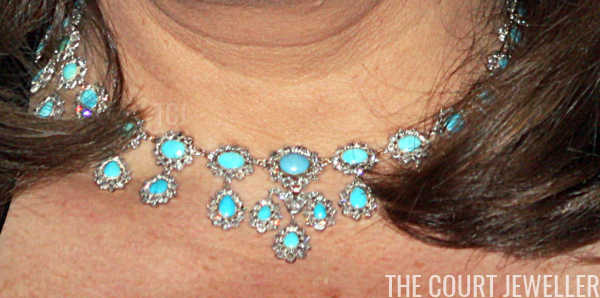 |
| Albert Nieboer/Royal Press Europe/Alamy |
The small Luxembourgish tiara has a matching necklace, which features a row of oval turquoise and diamond clusters and a row of pear-shaped turquoise and diamond cluster pendants. According to Luxarazzi (the go-to resource on everything about the grand ducal family), Grand Duchess Maria Teresa brought the tiara and necklace in 2006 to Muriel Prieur, one of the curators of the family collections. The jewels were in some form of disrepair, and Maria Teresa asked Prieur to restore them so they could be worn again.
 |
| Albert Nieboer/Royal Press Europe/Alamy |
Maria Teresa also asked Prieur to create a new pair of earrings to go with the suite. Indeed, the earrings are noticeably more modern in design, including the bezel setting of the turquoise stud.
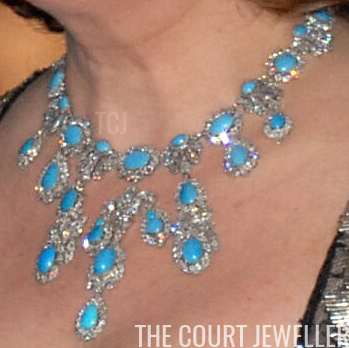 |
| JACQUES COLLET/AFP/Getty Images |
The ladies of Luxarazzi also note that a third turquoise and diamond piece was brought to Prieur by the Grand Duchess for restoration: a larger, more complicated diamond and turquoise necklace. This necklace also features clusters of oval and pear-shaped turquoises and diamonds in its design, but the stones are larger and the pendants are longer. Some sections also feature diamonds set in anthemion-like designs.
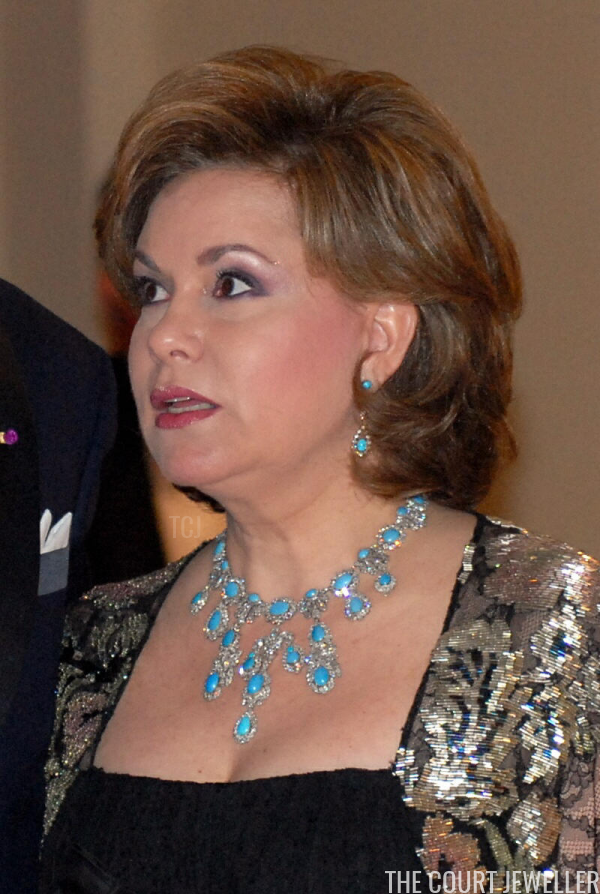 |
| JACQUES COLLET/AFP/Getty Images |
The larger, bib-style necklace was the first part of the set that Maria Teresa wore in public. In March 2007, she paired the necklace with the newly-created earrings for a gala at the Fine Arts Museum in Brussels during the family’s state visit to Belgium. (This was an important, sentimental state visit, as Grand Duke Henri’s mother was a Belgian princess who had passed away in 2005.)
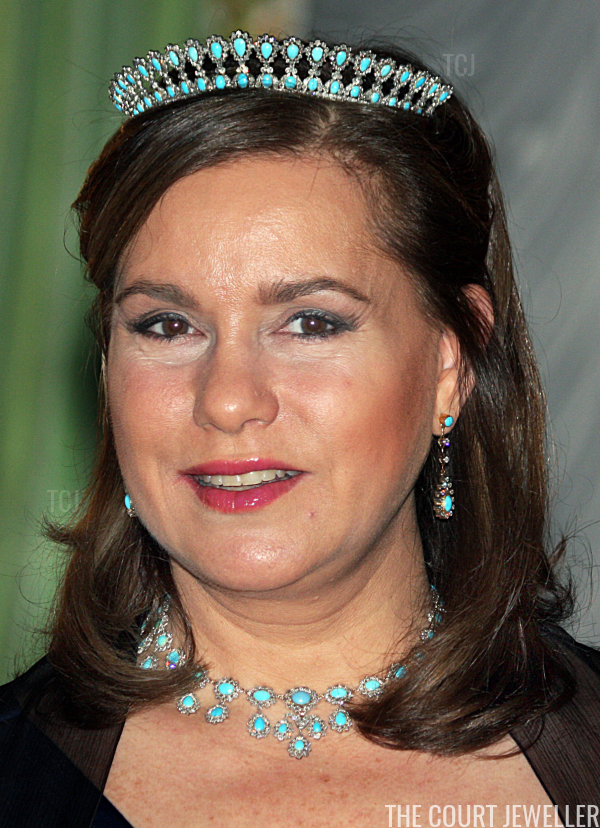 |
| Albert Nieboer/Royal Press Europe/Alamy |
In November 2008, Maria Teresa wore the restored tiara and small necklace in public for the first time, pairing them with the new earrings for a gala in Luxembourg during the state visit from the President of Finland.
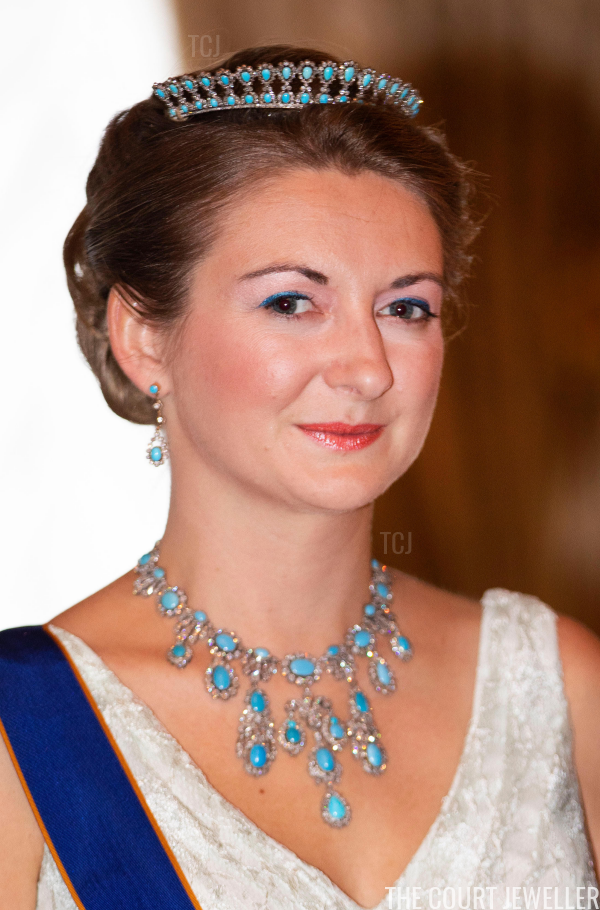 |
| Albert Nieboer/Royal Press Europe/Alamy |
Since then, two more Luxembourgish princesses have worn the jewels. Princess Tessy wore the tiara and earrings (without either necklace) for the National Day gala in 2010. Eight years later, Hereditary Grand Duchess Stephanie also wore the tiara for the annual National Day celebrations. On that occasion, she wore the tiara and earrings with the larger necklace from the set, the first time we’d seen that particular pairing in public.
- « Previous Page
- 1
- …
- 38
- 39
- 40
- 41
- 42
- …
- 100
- Next Page »